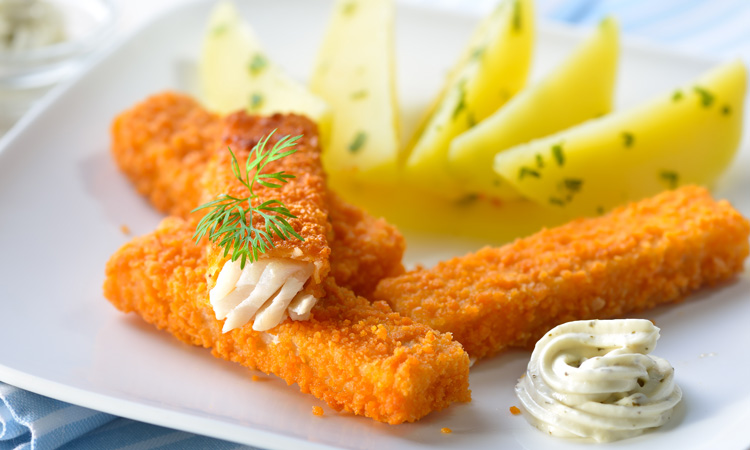Seafood products generate high ‘post catch’ greenhouse gas emissions
- Like
- Digg
- Del
- Tumblr
- VKontakte
- Buffer
- Love This
- Odnoklassniki
- Meneame
- Blogger
- Amazon
- Yahoo Mail
- Gmail
- AOL
- Newsvine
- HackerNews
- Evernote
- MySpace
- Mail.ru
- Viadeo
- Line
- Comments
- Yummly
- SMS
- Viber
- Telegram
- Subscribe
- Skype
- Facebook Messenger
- Kakao
- LiveJournal
- Yammer
- Edgar
- Fintel
- Mix
- Instapaper
- Copy Link
Posted: 17 January 2020 | Sam Mehmet (New Food) | No comments yet
Popular seafood products such as ‘fish sticks’ have been found to generate significant ‘post-catch’ emissions, underscoring the need to measure what happens after fish are caught, according to researchers at the University of California, Santa Cruz.


A new study of the climate impacts of seafood products has revealed that the processing of Alaskan pollock into fish sticks, imitation crab and fish fillets generates significant greenhouse gas emissions.
Post-catch processing is said to generate nearly twice the emissions produced by fishing itself, which is typically where the analysis of the climate impact of seafood ends, according to the findings by researchers at the University of California, Santa Cruz.
“The food system is a significant source of global greenhouse gas emissions, and Alaskan pollock is one of the biggest fisheries in the world,” said Brandi McKuin, a Postdoctoral Researcher in Environmental Studies at UCSC. “These findings highlight the need to take a comprehensive approach to analysing the climate impacts of the food sector.”
The results identify “hot spots” where the seafood industry could concentrate its efforts to reduce its climate impacts, said McKuin.
The authors analysed the climate impacts of transoceanic shipping of exported seafood products, and their study is said to be the first to consider the climate effects of so-called ‘short-lived’ pollutants in the carbon footprint of seafood.
They found that Alaskan pollock is a relatively fuel-efficient fishery: pollock are caught in large nets called midwater trawls that are towed behind boats, hauling in a lot of fish in each landing, and reducing the climate impact of the fishing process. After the catch, Alaskan pollock are shipped for processing, and in some cases, transported on large container ships that burn copious amounts of fuel, including cheaper, poor-quality bunker fuel that produces high levels of sulphur particles.
McKuin noted that sulphur oxides from ship fuels have a climate-cooling effect. “Seafood products that are exported have a lower climate impact than domestic seafood products,” she said, adding that the climate impacts of shipping will change this year as new regulations for cleaner marine fuels take effect. “Shipping has a massive influence on climate and a shift to cleaner fuels will diminish the cooling effect from sulphur oxides and increase the climate impact of products that undergo transoceanic shipping, including seafood,” she said.
“This study highlights the need to expand our view to encompass the entire supply chain,” said co-author Elliot Campbell, a Professor of Environmental Studies at UCSC, “It is not enough to look just at fishing. The picture is much bigger, and it is much more complicated.”
Organisations like Seafood Watch have developed tools to calculate the carbon footprint of seafood but have not yet included processing, noted McKuin, adding that “this study adds more data, so they can create a better tool.”









